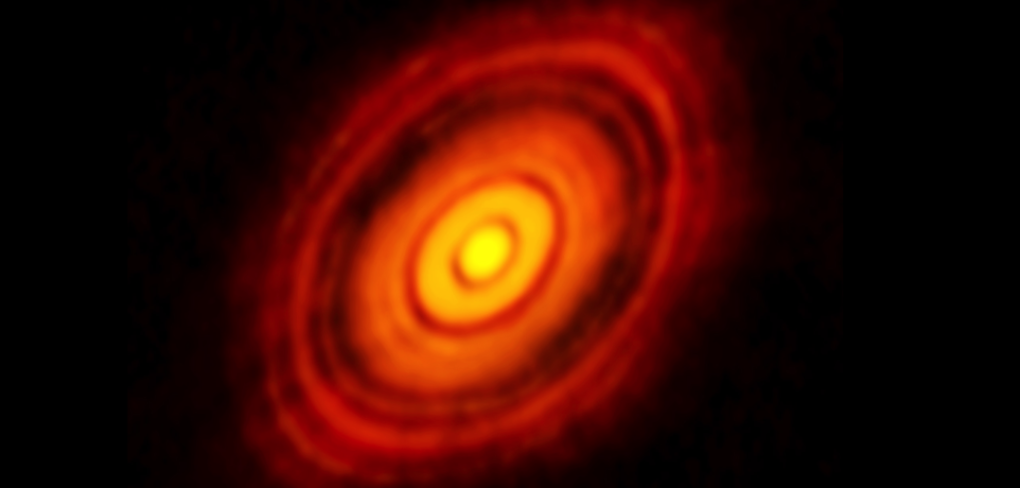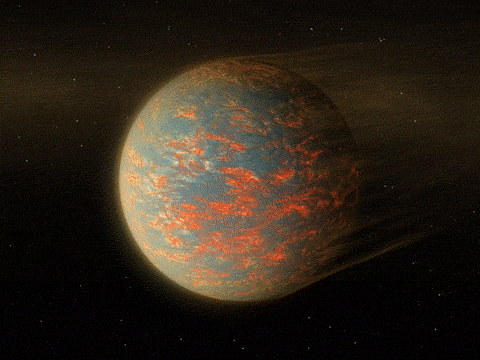
Before the explosion in discovery of extrasolar planets, the field of comparative planetology was pretty limited — confined to examining the differences between planets in our solar system and how they may have come to pass.
But over the past quarter century, comparative planetology and the demographics of planets came to mean something quite different. With so many planets now identified in so many solar systems, the comparisons became not just between one planet and another but also between one solar system and another.
And the big questions for scientists became the likes of: How and why are the planetary makeups of distant solar systems often so different from our own and from each other; what does the presence or absence of large planets in a solar system do to the distribution of smaller planets; how large can a rocky planet can get before it turns to a gas giant planet; and on a more specific subject, why do some solar systems have hot Jupiters close to the host star and others have cold Jupiters much further out like our own
Another especially compelling question involves our own solar system, though as something of an outlier rather than a prototype.
That question involves the absence in our solar system of anything in the category of a “super-Earth” — a rocky or gaseous extrasolar planet with a mass greater than Earth’s but substantially below those of our solar system’s planets next in mass, Uranus and Neptune.
The term “super-Earth” refers only to the mass and radii of the planet, and so does not imply anything about the surface conditions or habitability. But in the world of comparative planetology “super-Earths” are very important because they are among the most common sized exoplanets found so far and some do seem to have planetary characteristics associated with habitability.
Yet they do not exist in our solar system. Why is that?

In a recent article in The Astrophysical Journal Letters, planetary demographer Gijs D. Mulders of the Universidad Adolfo Ibáñez in Santiago de Chile and a member of the “Alien Earths” team of NASA’s Astrobiology Program, proposed a planet formation model that would explain how and where super-Earths form, and why they are not in our system.
A key component in the hypothesis is that the presence of gas giant planets (such as Jupiter) suppresses the formation of super-Earths. The paper argues that this is due to the process by which the giant planets are formed, and their locations.
Mulders and his group used a newly-embraced theory of planet formation called “pebble accretion,” whereby planets are formed by the pulling in of small bits of solid material (from centimeters to meters in diameter) from the protoplanetary disk. A competing theory says that planets form via “planetesimal accretion,” where much larger forming planets and objects crash into other planets and together they form a much larger object.
Here is Mulders’ explanation of why large planets outside the snowline of a disk keep super-Earths from forming:
“Initially, pebbles are continuously flowing inward through the disk unimpeded, first passing the locations where cold giant planets can form, than the locations where hot super-earths can form, and eventually they fall into the star.”
“When planets start growing, they initially only accrete a small amount of pebbles. But as they grow larger they start accreting more pebbles, and so fewer pebbles can reach the other planets located closer to the star. If a (giant) planet reaches a certain mass called ‘isolation mass’ they create a structure in the disk that completely blocks the flow of pebbles.”
“So in the model, it’s the location of the giant planet being upstream of where the super-Earths form which allows the giant planet to act as a dam, and preventing the super-Earths downstream from growing.”
The presence of both Jupiter and Saturn in our solar system would, then, create a solar dynamic that would block the formation of inner system planets larger than Earth and Venus.
This way of analyzing an observed situation — in this case, that there are no super-Earths in our solar system — is entirely in keeping with the systems approach that is commonly used in exoplanet work and astrobiology generally. Particular research goals and findings are almost never treated as standalone happenings, but rather as the functioning of much larger and complex systems at work.
In keeping with this approach, the pebble accretion theory of planet formation arose in part because other models could not account convincingly for the formation of large inner cores of the Jupiter and Saturn gas giants. And so a different system was proposed to better explain those phenomena, as well as many others.

“So we have ‘seen’ that pebbles are common in planet forming disks,” he said.
“I think the consensus is that pebble accretion plays some role in (rocky) planet formation, but the discussion is how big that role is. Some scientists advocate that pebble accretion is the dominant mechanism in planet formation and should be applied everywhere, other scientists believe that other mechanisms (planetesimal accretion, planet migration) are equally or more important and that the role of pebbles is much more limited and not applicable to many situations.”
“A good example is Earth: it is possible to explain some of its properties such as its mass and location with a pebble accretion model, but there are also geochemical constraints that suggest Earth was assembled through giant impacts, and thus a planetesimal formation model for the Earth and the terrestrial planets is more likely.”
As can be seen in the Mulders et al paper, the factors that produce the planetary makeup of a solar system are many and are by no means fully understood. But by example and comparison, those wildly divergent (and often surprising) factors increase understanding of what did and did not happen in the disks that formed the planets in our and other solar systems, and they promise to increase that understanding far more in the future.

According to NASA, 1,404 of the 4575 exoplanets that have been detected and confirmed are super-Earths.
This number, however, tells but part of the story. So far, our ability to find smaller distant planets has been limited, and so the detection skew towards the larger planets. But the exoplanet census of a small part of the sky taken by the Kepler Space Telescope suggests that small planets are far more common than detected so far.
There are also differences regarding definitions of a super-Earth. NASA defines them as more massive than Earth yet lighter than ice giants like Neptune and Uranus, and can be made of gas, rock or a combination of both. They are between twice the size of Earth and up to 10 times its mass.
Mulders says, however, that super-Earths are more broadly defined in his exoplanet community and that about 50 percent of sun-like stars have one or more super-Earths. As for M or red dwarf stars — smaller, cooler and the most common stars in the Milky Way — he said that some astronomers predict that almost all of them will have one or more super-Earths.
While Mulders focuses on mass and orbital paths of exoplanets, his field also attempts to compare surfaces, atmospheres and interiors of similar planets in different solar systems.
For instance, a surprising conclusion published in 2007 is that super-Earths can theoretically be more likely to support life than Earth. As presented by Diana Valencia of the University of Toronto in the Astrophysical Journal, rocky super-Earths will likely be more geologically active than Earth, with more vigorous plate tectonics due to thinner plates under more stress. In fact, models by Valencia and others suggested that Earth was itself a “borderline” case, just barely large enough to sustain plate tectonics — which are generally deemed necessary to recycle compounds needed for life.
In this way, comparative planetology is a lense through which we can better see our own planet and solar system, just as we can use Earth and are solar system to help understand other distant planets and systems.

Mulders is a member of the Earths in Other Solar (EOS) Systems/Alien Earths team — established in 2015 and funded by the NASA Astrobiology Program. It aims to understand how and where habitable, Earth-like planets form that have bio-essential ingredients (volatiles and organics). While Project EOS is nearing its end, a new NASA-funded project, Alien Earths, builds directly on results, methods, and data from EOS.
EOS and now Alien Earths are part of NASA‘s Nexus for Exoplanetary System Science (NExSS) program, which carries out coordinated research toward to the goal of searching for and determining the frequency of extrasolar planets with atmospheric biosignatures in the solar neighborhood. (NExSS sponsors Many Worlds.)
The EOS/Alien Earths team includes astrophysicists, planetary scientists, cosmochemists, material scientists, chemists and physicists. The principal investigator of EOS is Daniel Apai (University of Arizona). The project’s lead institutions are The University of Arizona‘s Steward Observatory and Lunar and Planetary Laboratory.
Alien Earths is inevitably immersed in comparative planetology as a tool for predicting habitability. And the sample size is large and getting larger.
While 4.575 exoplanets have been detected and confirmed so far, it is apparent that many, many more are out there. Many of the several thousand planets identified by Kepler remain exoplanet candidates because they have not been verified yet. But they are considered to have a 80 to 90 percent probability of being real discoveries.
Stepping back further, many astronomers are convinced that every star in the Milky Way has, on average, at least one planet. Since there are hundreds of billions of stars in our galaxy, that means there are likely to be hundreds of millions of exoplanets out there.
How they are different and similar — especially in their potential habitability — will be a focus for decades to come.
